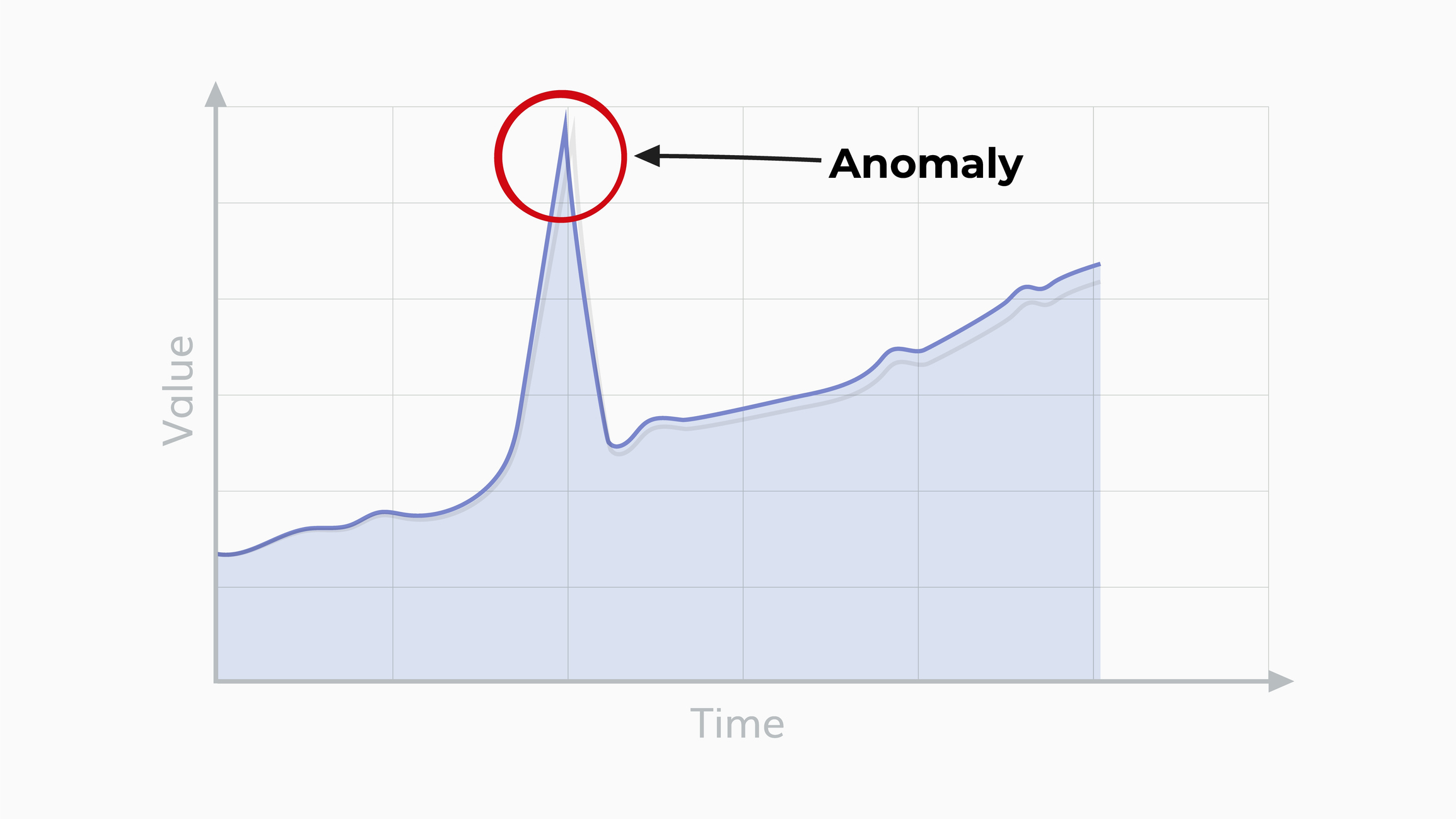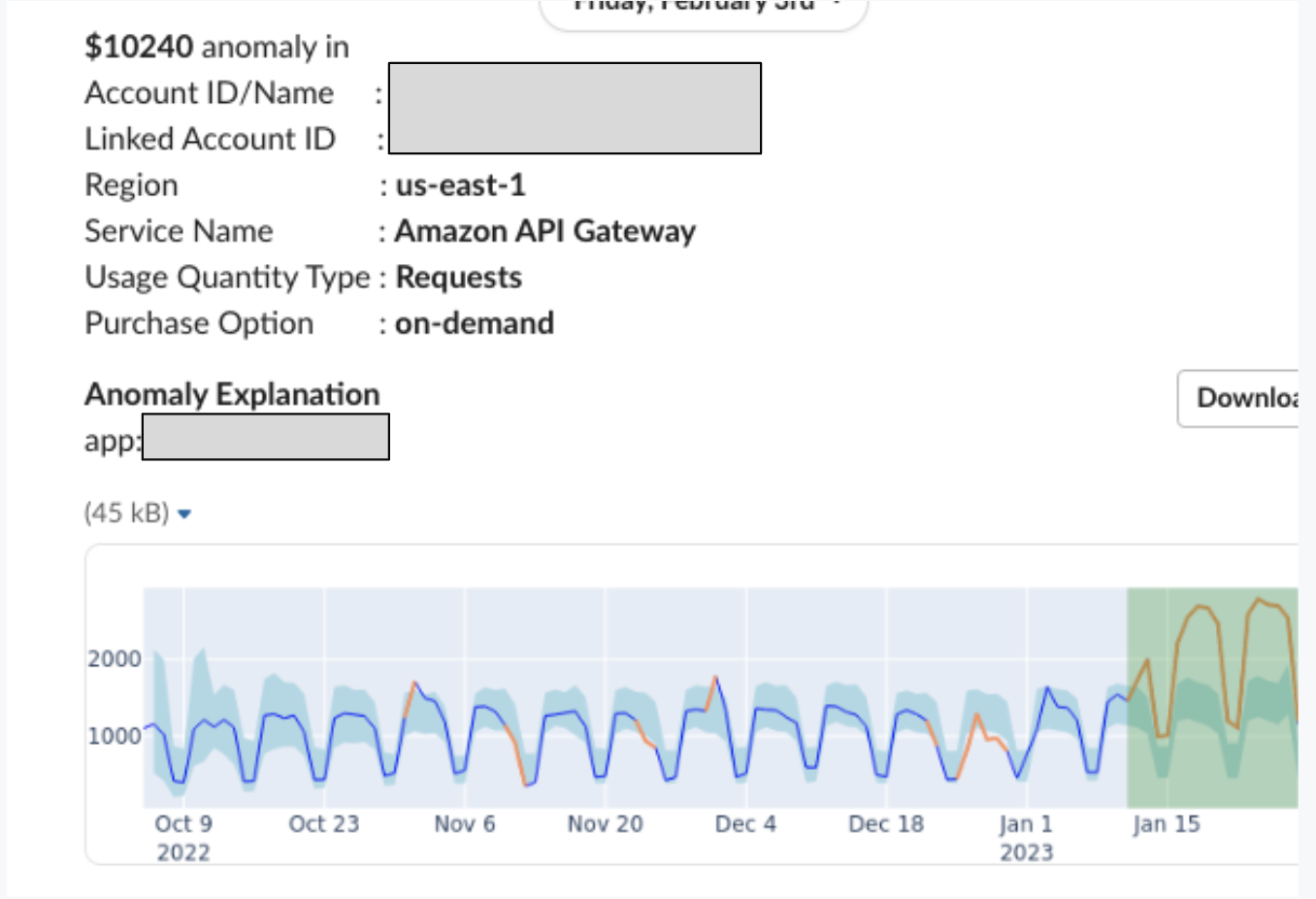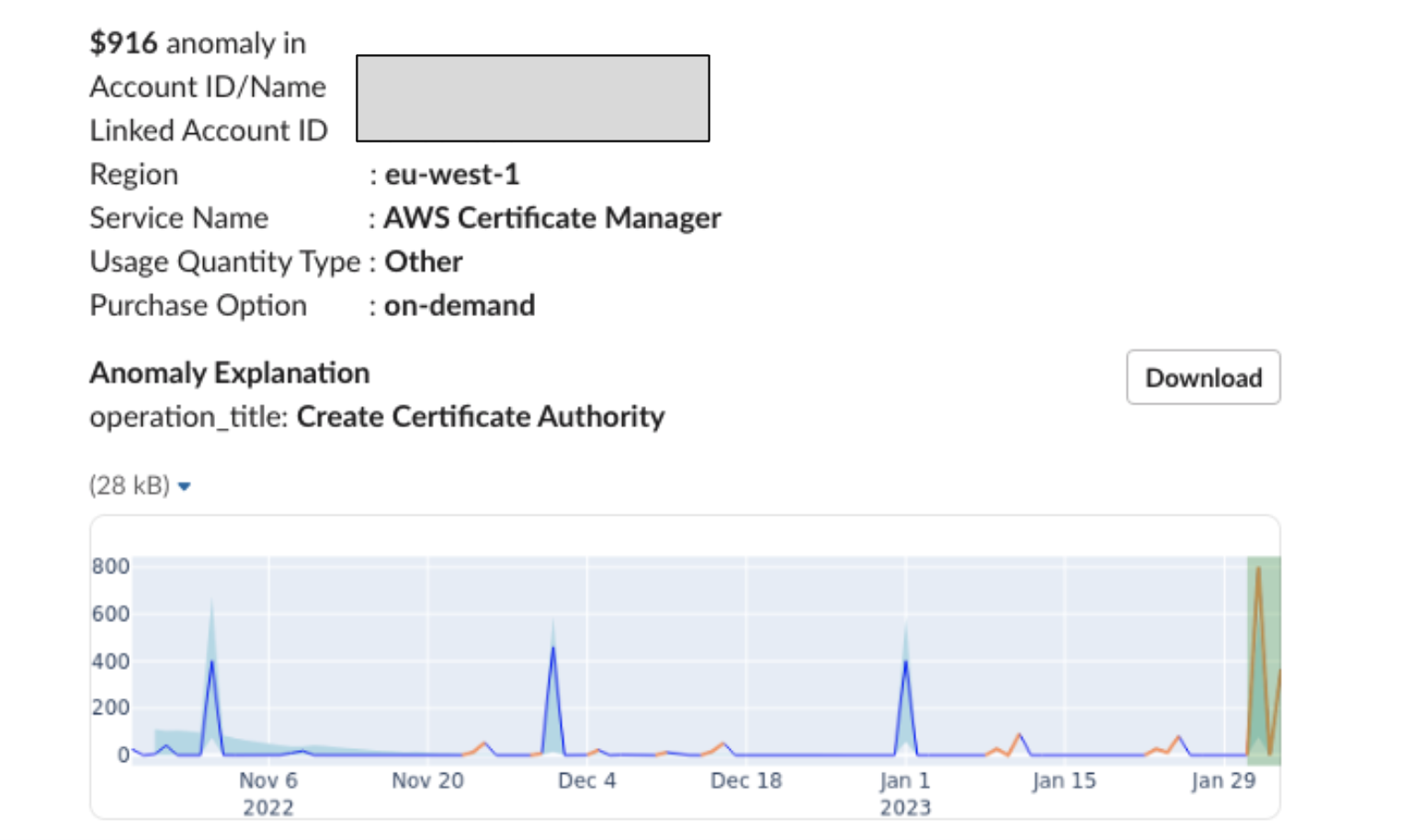“Time is money” couldn’t be truer than in managing cloud costs. By way of proactive anomaly detection, a chance is given to save time that could have been spent on issue recognition and resolution.
Anomaly detection for the Cloud can be tricky since there can be changes in prices & data on billing history anytime. Not to mention, seasonality can mess things up as well.
Detecting anomalies in cloud environments is crucial to ensure security, optimize performance, and control costs, among other things. It helps cloud providers, and users manage and safeguard their resources, data, and services in an ever-evolving and dynamic cloud landscape. Translating this capability to numbers, we’ve detected and saved $7M In just the few months of running anomaly detection for a small subset of our customers.
What’s next: Let’s go over the challenges of anomaly detection in cloud environments and how Anodot’s sophisticated algorithm stands apart from the rest.

The Challenges of Anomaly Detection in Cloud Environments
Cloud cost data can be interesting (to say the least) with its dynamic nature that’s affected by changing prices and updates to billing history.
Anomaly detection in cloud environments can be vexing and frustrating, presenting various challenging issues. Such as:
- Data volume and velocity: Have you ever dealt with the overwhelming amount of data cloud services generate? It’s hard to keep up! Not only that, but the data is also subject to rapid changes, which makes real-time monitoring essential for identifying anomalies.
- Unstructured and inconsistent data: When it comes to cloud environments, there’s a whole bunch of systems and platforms that generate all sorts of data—from system metrics and logging data to pricing changes and usage data. And all of that data is tricky to standardize and analyze.
- False positives: While anomaly detection aims to identify unusual patterns in data, it can often produce false positives due to incorrect assumptions about baseline behaviors.
Organizations must be prepared to address these challenges when using anomaly detection for cloud environments, as they are essential for maintaining secure, reliable services.
Anomaly detection can pose challenges for cloud data analysis, but it’s a must-have tool for keeping your services secure and reliable. So search for a scalable solution with robust and accurate ML-based anomaly detection algorithms. (The search is over; we’ve got you covered!)
Why traditional anomaly detection methods may struggle with cloud data
In today’s world, with data coming from multiple sources more than ever, it’s essential to have a reliable algorithm (like Anodot 😉) for detecting anomalies in cloud costs. Without it, detecting and repairing errors can consume an excessive amount of time.
Here’s why old-school anomaly detectors just can’t keep pace with today’s cloud costs:
Lack of Contextual Information: Traditional anomaly detection methods mainly rely on statistical or mathematical models that analyze data distribution and patterns. But let’s face it, in cloud environments, context is king. Understanding anomalies is all about the interrelationships between components, usage patterns, and user behavior. Without this information, accurate anomaly detection is far from guaranteed.
Dynamic and Evolving Nature: When dealing with cloud environments, things are constantly changing! Traditional anomaly detection techniques can’t keep up with this data since they use preset thresholds. That means they either rate a lot of false positives or, worse, can’t spot emerging anomalies! 😱
Concept Drift: Cloud environments undergo concept drift, meaning the data distribution and characteristics change over time. Traditional anomaly detection methods rely on historical data and assume stationary data distributions. Hence, they may not adapt well to the evolving nature of cloud data and miss out on spotting new and emerging anomalies.
To solve these challenges, we’ve developed advanced anomaly detection techniques like machine learning algorithms that work for any metric source and automatically discover cross-siloed correlations. Anodot is basically taking anomaly detection in the cloud to the next level!
Facts, Figures, and Real-World Examples
To truly grasp the impact of cost anomalies, you gotta see them in action. When these things mess with your finances, it’s time to identify pain points and take action. Analyzing these hiccups can uncover helpful insights to create a bulletproof financial strategy and, ultimately, success!
So let’s look at some examples of what these anomalies may look like:
Example 1:
One mistake by an engineering team in charge of one of the apps led to unintended consequences. The team released a version of the app that started making too many network calls, resulting in a spike in costs across multiple services.
Example 2:
Every month, there’s a charge for a significant amount for the service and operations used in the above example. However, in February, there was an anomalous spike in the fee, considerably more than the average charge.
Example 3:
There was a sharp increase in cost per usage. After some investigation, it was discovered that the pricing had erroneously been assigned to the more expensive tier, resulting in incorrect charges.
Impact of these detections on businesses and their operations
What can we learn from these examples? Detecting and rectifying anomalies before they occur is incredibly valuable. Not only does it save on cloud costs, but it also ensures peace of mind, knowing that you won’t be caught off-guard by any unforeseen spikes in the future.
Being proactive in monitoring your cloud environment helps identify anomalies and inform decisions for service optimization. Put checks in place to monitor unexpected spikes or drops in cost to control costs.
Did you know? – with Anodot, you can optimize cloud resources & save costs- no need to learn any complicated ML. Interested? Let’s take this conversation somewhere else!
Final Thoughts
What have we gathered? We’ve learned a lot about anomaly detection, haven’t we? We’ve seen that it’s a powerful tool for cloud infrastructure monitoring and cost optimization. But we also have to be wary of using a solution that’s out of date, or it could mean a financial loss in cloud costs.
However, when using the right vendor, anomaly detection can be an effective way to save on costs and ensure your cloud environment remains stable.
With Anodot, you don’t have to learn any complicated ML techniques because:
- Our solution is super comprehensive. It reduces all types of false positives!
- It’s super easy to use and integrates smoothly across various sources.
- Not to brag, but we are also the fastest and most efficient anomaly detection algorithms in the world. 🏆
So, let’s kick off your journey toward saving cloud costs today! Let’s chat.







